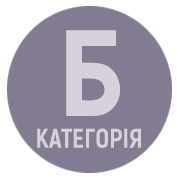THE CURRENT STATE OF PHYTOSANITARY MONITORING OF REGULATED PESTS IN THE SOUTH OF UKRAINE
DOI:
https://doi.org/10.32851/tnv-pub.2021.1.1Keywords:
quarantine inspection, entomological pests, insects, ecological threshold of harmfulness, CSFAbstract
The article presents the results of studies of environmental phytosanitary monitoring of plant products grown in Kherson region and imported from abroad. Particular attention is paid to the study on the study of quarantine pests and harmful microorganisms in our region in order to solve the problem of reducing the yield of agricultural products and deterioration of its quality. During the monitoring, it was found that according to the Kherson Phytosanitary Laboratory, in the last two years, a number of cases of importation of quarantine species of entomological pests and pathogens from abroad were recorded. When conducting field research, a number of phytophages exceeding the threshold of harmfulness, which may be the cause of the deterioration of the crop quality, was also recorded in the soil and on the plants. The most widespread phytopathogens of our region have been revealed by the employees of the Kherson regional phyto-sanitary laboratory in recent years. More than 60% of species of plant pathogens are transmitted through seeds, so the staff of the Kherson Regional Phytosanitary Laboratory carries out a very careful check for the presence of pathogens of seed material of both domestic and foreign origin.After all, sowing contaminated seeds leads to the transmission of diseases to vegetative plants and thereby creates and maintains foci of infection in the field and can get from another country to ours (and vice versa). The main problem in the south of Ukraine (especially in the Kherson region) is the problem of control of potato nematodes, the plant of which is the potato. Also affected are tomatoes, eggplants, other species and hybrids of the Solanaceae family.According to the results of the researches, it was concluded that as a result of timely receipt of information on the determination of harmful organisms, optimal decisions can be made to control them, and modern integrated means of plant protection should be used.
References
Білик М.О. Біологічний захист рослин : посібник для лабораторних занять. М.О. Білик. Харків, 2009. 424. С. 31.
Білик М.О. Захист овочевих культур від хвороб і шкідників у закритому ґрунті. М.О. Білик, М.Д. Євтушенко, Ф.М. Марютін. Харків, 2013. 464 с.
Доля М.М. Фітосанітарний моніторинг. М.М. Доля, Й.Т. Покозій, Р.М. Мамчур та ін. Київ : ННЦ ІАЕ, 2014. 294 с.
Євтушенко М.Д. Сільськогосподарська ентомологія. Назви основних шкідників сільськогосподарських культур і лісових насаджень: навч. посібник. Харків, 2010. С. 15.
Красиловець Ю.Г. Наукові основи фітосанітарної безпеки польових культур. Ю.Г. Красиловець. Харків : 2010. 416 с.
Кулєшов А.В. Фітосанітарний моніторинг і прогнозування: навч. посібник. А.В. Кулєшов, М.О. Білик, С.В. Довгань. Харків : Еспада, 2011. 608 с.
Литвинов Б.Д. Сільськогосподарська ентомологія: підручник за ред. Б.М. Литвинова, М.Д. Євтушенка. Київ, 2015. 511 с.
Марютін Ф.М. Фітопатологія : підручник. Ф.М. Марютін, М.О. Білик, В.К. Пантєлєєв. Харків : Еспада, 2008. 548 с.
Писаренко В.В. Захист рослин: Фітосанітарний моніторинг, методи захисту рослин, інтегрований захист рослин. В.М. Писаренко, П.В. Писаренко. Полтава, 2017. 256 с.







